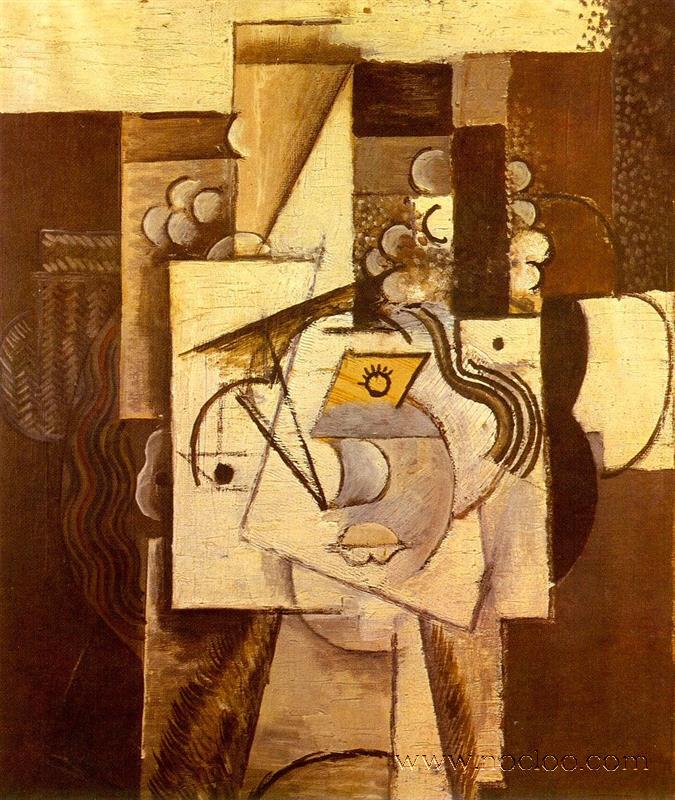


He wanted to develop a new way of seeing that reflected the modern age, and Cubism is how he achieved this goal. In collaboration with his friend and fellow artist Georges Braque, Picasso challenged conventional, realistic forms of art through the establishment of Cubism. 1907-1917, Pablo Picasso* pioneered the Cubism movement, a revolutionary style of modern art that Picasso formed in response to the rapidly changing modern world. Barr was the first director of the Museum of Modern Art, New York and likely took his queue for the formal phrases from Kahnweiler.From c. (1902-1981) in his books on Cubism and Picasso. The terms "Analytic Cubism" and "Synthetic Cubism" were popularized by Alfred H. He did not invent the term "Synthetic Cubism." Kahnweiler, who was Picasso and Braque's art dealer, wrote his book while in exile from France during World War I. The word "synthesis" about Cubism can be found in Daniel-Henri Kahnweiler's book "The Rise of Cubism" ( Der Weg zum Kubismus), published in 1920. Synthetic Cubism's integration of "high" and "low" art (art made by an artist combined with art made for commercial purposes, such as packaging) can be considered the first Pop Art. It also influenced later 20th-century artists such as Jacob Lawrence, Romare Bearden, and Hans Hoffman, among many others. The Spanish painter Juan Gris was a contemporary of Picasso and Brague who is also well-known for this style of work. Synthetic Cubism lasted well into the post-World War I period. Braque's first papier collé (pasted paper), "Fruit Dish with Glass," was created in September of that same year(Boston Museum of Fine Arts). The invention of collage, which integrated signs and fragments of real things, is one aspect of "Synthetic Cubism." Picasso's first collage, "Still Life with Chair Caning," was created in May of 1912 (Musée Picasso, Paris).

These were either real or painted and interacted on the flat plane of the canvas as the artists tried to achieve a total interpenetration of life and art. The artists could also be found to utilize everything from fragments of newspaper and playing cards to cigarette packs and advertisements in their work. Rather than paint flat depictions of paper, they incorporated real pieces of paper, and real scores of music replaced drawn musical notation. They regularly used passage, which is when overlapping planes share a single color. Within their experiments, the artists employed a variety of techniques to achieve their goals. Lively reds, greens, blues, and yellows gave great emphasis to this newer work. In the previous period, the colors were very muted, and many earth tones dominated the paintings. This took what they were doing in the Analytic Cubism period to a new level because it discarded the idea of three dimensions in their work.Īt first glance, the most noticeable change from Analytic Cubism is the color palette. Picasso and Braque discovered that through the repetition of "analytic" signs their work became more generalized, geometrically simplified, and flatter. It was developed by Pablo Picasso and Georges Braque and then copied by the Salon Cubists. Many art historians consider Picasso's "Guitar" series to be the ideal example of the transition between the two periods of Cubism. Synthetic Cubism grew out of Analytic Cubism. It was also the birth of collage art in which real objects were incorporated into the paintings. Led by two famous Cubist painters, it became a popular style of artwork that includes characteristics like simple shapes, bright colors, and little to no depth. Synthetic Cubism is a period in the Cubism art movement that lasted from 1912 until 1914. Columbus Museum of Art, Ohio.Įstate of Pablo Picasso/Artists Rights Society (ARS), New York/Used with Permission Still Life with Compote and Glass, 1914-15.


 0 kommentar(er)
0 kommentar(er)
